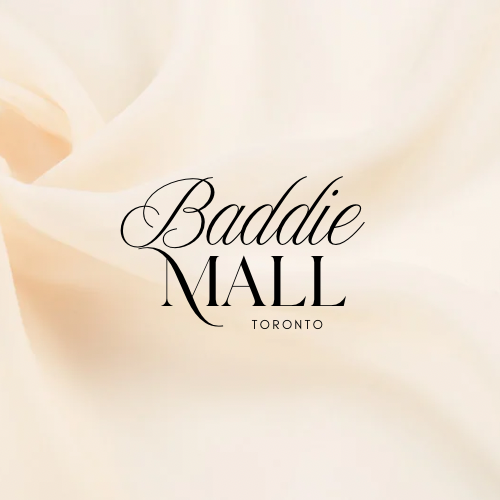How to Style Your Favorite Outfits
- Baddie Leeann
- Nov 3
- 4 min read
Finding your favorite outfit is a joy, but styling it to look fresh and polished every time can be a challenge. Whether you want to elevate a casual look or add personality to a classic piece, knowing how to style your clothes makes a big difference. This guide will help you unlock the potential of your wardrobe by sharing practical tips and examples to create stylish, confident looks with the clothes you already love.
Understand Your Personal Style
Before diving into styling techniques, it’s important to know what kind of style suits you best. Your personal style reflects your personality, lifestyle, and preferences. It helps you choose outfits that feel authentic and comfortable.
Identify your style icons: Think about celebrities, influencers, or people around you whose style you admire.
Assess your lifestyle needs: Consider your daily activities and dress codes.
Create a mood board: Collect images, colors, and textures that inspire you.
Knowing your style makes it easier to mix and match pieces and avoid buying items that don’t fit your aesthetic.
Build a Versatile Wardrobe Foundation
A well-rounded wardrobe foundation includes timeless, versatile pieces that can be styled in multiple ways. These basics serve as the canvas for your favorite outfits.
Classic jeans: A good pair of jeans in a flattering cut works for casual and semi-formal looks.
Neutral tops: White, black, beige, or gray tops can be paired with almost anything.
Layering pieces: Cardigans, blazers, and denim jackets add dimension.
Comfortable shoes: Sneakers, loafers, or ankle boots that match various outfits.
Having these essentials allows you to style your favorite statement pieces without worrying about clashing colors or styles.
Use Accessories to Transform Your Look
Accessories are powerful tools to change the vibe of an outfit. They add personality and can make a simple outfit stand out.
Jewelry: Layer delicate necklaces or wear bold earrings depending on the occasion.
Belts: Cinch your waist with a belt to add shape and interest.
Scarves: Use scarves to add color or texture.
Bags: Choose bags that complement your outfit’s style and color palette.
Hats and sunglasses: These can add a trendy or classic touch.
For example, pairing a plain white t-shirt and jeans with a statement necklace and a colorful bag instantly elevates the look.
Play with Colors and Patterns
Mixing colors and patterns can be intimidating but done right, it creates eye-catching outfits.
Start with neutrals: Use neutral colors as a base and add one or two accent colors.
Match patterns carefully: Combine patterns of different scales, like a small polka dot top with wide-striped pants.
Use the color wheel: Complementary colors (opposites on the wheel) create contrast, while analogous colors (next to each other) offer harmony.
For example, a floral blouse with solid-colored pants in one of the blouse’s colors creates a balanced look.
Layering for Style and Function
Layering adds depth and allows you to adapt your outfit to different temperatures or occasions.
Start with a base layer: A fitted top or dress.
Add a middle layer: Sweaters, vests, or shirts.
Finish with an outer layer: Jackets, coats, or blazers.
Layering also lets you mix textures, such as pairing a soft knit sweater with a leather jacket.

Tailor Your Clothes for a Perfect Fit
Even the most stylish outfit can look off if the fit isn’t right. Tailoring can transform your favorite pieces.
Adjust hemlines: Shorten pants or skirts to suit your height.
Take in or let out seams: Ensure tops and dresses fit your body shape.
Alter sleeves and shoulders: Proper sleeve length and shoulder fit improve overall appearance.
A well-fitted outfit boosts confidence and looks polished.
Mix Casual and Formal Elements
Combining casual and formal pieces creates a modern, balanced look.
Pair a blazer with jeans and sneakers for a smart-casual vibe.
Wear a flowy dress with a leather jacket and boots for an edgy twist.
Combine tailored trousers with a graphic tee and loafers.
This approach keeps your style fresh and versatile.
Experiment with Textures
Texture adds interest and dimension to your outfits.
Mix smooth fabrics like silk or satin with rougher ones like denim or wool.
Combine knitwear with leather or suede.
Use textured accessories like woven bags or embroidered scarves.
For example, a chunky knit sweater with sleek leather pants creates a striking contrast.
Choose Shoes That Complement Your Outfit
Shoes can make or break an outfit. Choose footwear that matches the style and occasion.
Sneakers for casual and sporty looks.
Loafers or ballet flats for everyday chic.
Heeled boots or pumps for dressier occasions.
Sandals for warm weather and relaxed styles.
Consider color and material to ensure harmony with your outfit.
Care for Your Clothes to Keep Them Looking New
Styling is not just about putting outfits together but also maintaining your clothes.
Follow washing instructions carefully.
Store clothes properly to avoid wrinkles and damage.
Repair minor damages like loose buttons or small tears promptly.
Rotate your wardrobe to avoid excessive wear on favorite pieces.
Well-maintained clothes always look better and last longer.
Use Inspiration Without Copying
Look for inspiration from fashion magazines, blogs, or street style but adapt ideas to your taste.
Take note of color combinations you like.
Try new layering techniques.
Experiment with accessories you don’t usually wear.
This keeps your style evolving and personal.
Final Thoughts
Styling your favorite outfits is about creativity, confidence, and understanding what works for you. By focusing on fit, layering, accessories, and mixing elements thoughtfully, you can refresh your wardrobe without buying new clothes. Start experimenting today and enjoy the process of making your favorite pieces feel new and exciting every time you wear them. Your style is your story—make it uniquely yours.



Comments